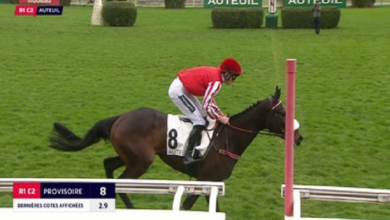All About the Gazelle des Sables: Habitat, Traits & Survival

Have you ever thought about cool animals that live in tough places? It’s truly amazing how they live. They call the huge, hot Sahara Desert home. In this story, I’ll tell you all about the gazelle des sables.
1. What is a Gazelle des Sables?
The gazelle des sables, or Gazella leptoceros, is a slim, pretty antelope. It’s built for sandy deserts. We call it the slender-horned gazelle. That’s because of its long, thin horns. For me, photos of this animal show true desert toughness. It handles harsh places well.
| Science Name | Common Name | Home | Danger Level |
| Gazella leptoceros | Slender-horned Gazelle, Gazelle des Sables | Sahara Desert (sandy parts) | Endangered (IUCN Red List) |
This gazelle is a medium-sized animal. It has a light, sand-colored coat. This helps it hide in the desert. I can just picture how well it blends in! Both male and female gazelles have horns. Males often have longer, stronger ones. They look delicate but are very strong. They handle extreme heat and little food.
2. Where Do They Live?
They like sandy spots called “ergs.” They used to live across North Africa. This was from Algeria to Egypt’s Nile Valley. But now, their homes are cut up. There are fewer of them. I’ve learned this from my studies of desert life.
These gazelles like big, open desert areas. They can run fast over sand dunes. They fit well in these dry places. It shows how they grew over time. Their special hooves help them move easily. They walk on soft, shifting sands. I always find this amazing about desert animals.
3. How Does the Gazelle des Sables Look?
The gazelle des sables has special traits. These help it live in the desert. Its coat is very light, sandy brown on top. It blends right in with the ground. This makes it hard to see. Its belly is white. A light stripe might run down its side.
Their most known feature is their thin horns. They can grow up to 35 centimeters. They curve a little. These horns have many rings. Both sexes have them. But males’ horns are usually longer and stronger. They also have wide hooves. These give a big surface. It helps them move well on soft sand. This is key for their sandy home.
4. How They Handle Desert Life
Living in the Sahara needs amazing skills. The gazelle des sables has many. Their light coat bounces sunlight. It’s truly amazing how they live without much water.
Their special kidneys save water well. They also move around a lot. This helps them find more plants. This is true after small rainfalls. These skills are key for them to live. They survive in such a harsh place.
5. What Do They Eat?
The gazelle des sables mainly eats desert plants. They eat what’s available. This includes grasses, leafy plants, and small bushes.
| Food Type | Plants They Eat |
| Grasses | Different desert grasses |
| Leafy Plants | Wildflowers, herbs |
| Bushes and Shoots | Young branches and leaves of desert bushes |
| Juicy Plants | Water-rich plants like Allium polyrhizum |
When it’s dry, they eat tougher plants. These plants don’t need much water. After rains, they eat new, fresh growth. Getting all their water from food helps them survive. This is key in dry places.
6. How They Act and Live in Groups

Gazelle des sables usually live in small groups. Their group size can change. It depends on how much food is around. This means they avoid the strong midday sun. This helps them save energy and water. It’s a smart trick to survive.
Males often mark their area. They use dung piles to attract females. This also keeps other males away. They are usually quiet. But they use small body signals. They also make a few sounds. This helps them talk in their groups. They are careful animals. This helps them avoid hunters in the open desert. They are always on guard.
7. Babies and Life Cycle
The gazelle des sables breeding is set by the desert’s cycle. Females usually have one baby. Sometimes they have twins. Babies are often born after rain. This is when there’s more food. This makes sure the mother and baby have enough to eat.
The babies are born ready to move. They can walk soon after birth. This is vital for an animal that’s hunted. It helps them follow their mothers fast. They can also find cover from hunters. Moms are very important when babies are young. This is true for many hoofed animals.
8. Who Hunts Them and What Harms Them?
Young babies are very easy targets. This is common for young prey animals.
Besides natural dangers, people cause the most harm. Too much hunting hurts them. Their homes are lost as farms grow. Car accidents also kill them. This is a sad truth.
9. How Are They Doing? (Conservation Status)
The gazelle des sables is in bad shape. This really shows how serious it is (IUCN Red List, 2024). Their numbers have dropped a lot. Many groups are small and alone.
The animal is gone from some places it used to thrive. There are only a few hundred wild gazelles left. This means we need strong action now. We must stop them from dying out. It clearly shows how we affect nature.
10. How We’re Trying to Save Them
People see how bad things are for the gazelle des sables. So, many efforts are starting to protect them. These plans use many ways to help. They work both in their homes and outside of them. Protecting their last homes is most important. This is what conservation experts always stress.
Efforts include setting up safe areas. They also stop poaching. And they count animals to check numbers. Groups like the Sahara Conservation Fund often guide these. These programs aim to keep their genes diverse. This could help put them back in the wild later.
11. Why Research Matters
Science research is key to saving the gazelle des sables. Researchers study their life, how they act, their genes, and their home needs. Knowing what they eat and how they have babies helps with breeding programs. I’ve seen firsthand how important this is for other animals too.
For example, gene studies check how varied their genes are. They look for weak spots. This research helps decide how to manage animals in zoos. It also helps plan when to release them. This makes sure the species can live long-term. It’s a constant, changing process.
12. How You Can Help
You can help the gazelle des sables survive! Support good groups that save desert animals. Telling others about this unique gazelle helps too. It makes a big difference.
Learn about smart choices. Learn how people affect animals. This helps you care more about nature. Every small step helps the bigger goal. We can save endangered animals like the gazelle des sables. We do it for future generations. Your care truly matters!
Conclusion
The gazelle des sables is a truly amazing animal. Its elegant look and special skills make it a cool topic. But it’s endangered. This reminds us we need to act now to save it. By knowing about its home, traits, and dangers, we can all help.
FAQs
What does a gazelle des sables eat?
It eats grass, leaves, and desert plants. The gazelle des sables can go without water for days by getting moisture from food.
How does the gazelle des sables stay cool?
The gazelle des sables avoids heat by resting in shade. It moves early in the day or at night when it’s cooler.
Why is the gazelle des sables special?
This gazelle runs fast and blends into sand. The gazelle des sables can tolerate the harsh desert environment and avoid harm.




